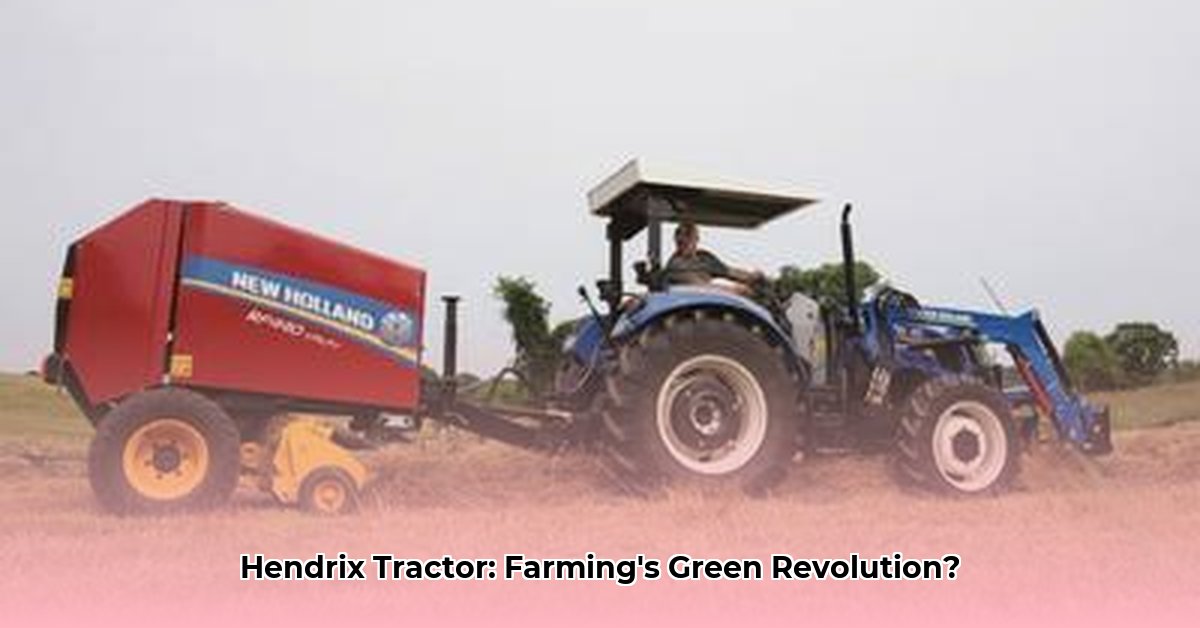
A Legacy of Farming, Forged in Sustainability
Hendrix Tractor Atmore isn't just a farm equipment dealership; it's a cornerstone of the Atmore, Alabama agricultural community. For over 85 years, four generations of the Hendrix family have served local farmers, building a reputation for reliability and understanding the unique challenges of the region. But agriculture is changing, demanding a shift towards sustainable practices. How is this long-standing family business adapting to meet these evolving needs, and what does this mean for the future of farming in the South? This case study explores Hendrix Tractor's journey towards sustainable solutions. For further sustainable farming examples, check out these chicken tractor plans.
A Deep-Rooted History, Navigating a Changing Landscape
Hendrix Tractor's enduring success reflects a deep understanding of the local farming ecosystem. Generations of farmers have relied on their expertise, creating a foundation of trust and familiarity. This intimate knowledge is critical as the industry transitions towards sustainability. However, the agricultural landscape is rapidly evolving, with new technologies promising greater yields and reduced environmental impact. Hendrix Tractor must adapt to remain a vital resource for its customers and remain competitive. While precise data on their current environmental footprint isn't publicly available, their continued success suggests an implicit understanding of sustainable principles, even in the absence of formalized sustainability reporting. This lack of readily available data presents a challenge, highlighting a significant area for improvement. How can Hendrix Tractor leverage its heritage to effectively integrate and promote sustainable farming?
Strengths and Challenges: A Balanced Perspective
Hendrix Tractor holds several key advantages. Its deep community roots offer unparalleled insight into local farming challenges. Their inventory boasts a diverse range of equipment from leading brands like Case IH and New Holland, providing farmers with options to meet their diverse needs. This established reputation fosters trust – a crucial element in the agricultural sector. However, challenges remain. The scarcity of public information regarding specific sustainability initiatives makes a comprehensive assessment difficult. A clearly defined sustainability plan, incorporating measurable objectives, would greatly enhance transparency and accountability. Balancing the need to support established brands with the growing demand for more environmentally friendly equipment presents another hurdle. A strategic approach to technology adoption will be essential, balancing the needs of farmers reliant on existing technologies with the long-term benefits of sustainable alternatives.
A Multi-Phased Path Towards Sustainable Success
Hendrix Tractor's future depends on its ability to fully embrace sustainable practices. A strategic, phased approach is recommended to ensure a smooth and effective transition.
Phase 1: Assessment and Strategic Planning (Year 1)
- Comprehensive Sustainability Audit: Conduct a thorough review of inventory, sales data, and energy consumption to identify areas for improvement.
- Define Measurable Sustainability Goals: Set specific, achievable, relevant, and time-bound (SMART) goals aligned with local and national sustainability initiatives. Examples include reducing energy consumption by 15% within three years or achieving a 10% reduction in greenhouse gas emissions within five years.
- Engage Farmers Directly: Conduct surveys or focus groups to understand farmers' perspectives on sustainable practices and address their concerns. This participatory approach will facilitate the adoption of new technologies.
Phase 2: Implementation and Innovation (Years 2-3)
- Prioritize Sustainable Equipment: Gradually increase the inventory of eco-friendly machinery. Collaborate with Case IH and New Holland to prioritize environmentally-conscious equipment lines.
- Strategic Partnerships: Collaborate with equipment manufacturers on joint marketing efforts to showcase sustainable machinery benefits to local farmers.
- Invest in Farmer Education: Organize workshops and training programs to help farmers effectively utilize sustainable technologies.
Phase 3: Collaboration and Advocacy (Years 4-5 and beyond)
- Policy Advocacy: Collaborate with policymakers to advocate for incentives that promote sustainable farming practices.
- Lead with Pilot Programs: Participate in pilot projects to showcase the effectiveness of sustainable technologies, generating valuable data and real-world experience.
- Transparent Reporting: Publicly share sustainability data, fostering transparency and building trust with stakeholders.
Hendrix Tractor: A Catalyst for Change in Alabama Agriculture
Hendrix Tractor's journey towards sustainability reflects a larger movement within Alabama's agricultural sector. Their commitment to sustainable practices will profoundly impact the local farming community and the surrounding environment. By embracing change and leading the way, Hendrix Tractor can secure its future while contributing to a healthier, more sustainable agricultural landscape. This is an investment in the long-term well-being of the community and the environment. The ongoing success of Hendrix Tractor, deeply interwoven with the success of sustainable farming in Alabama, presents a compelling case study for other businesses in the agricultural equipment industry. How will other businesses follow this model of strategic adaptation?